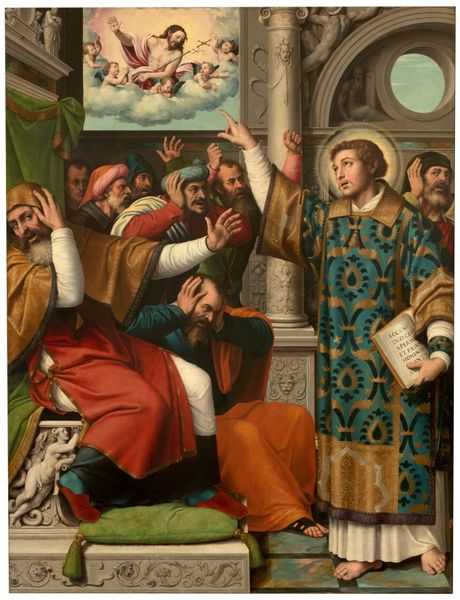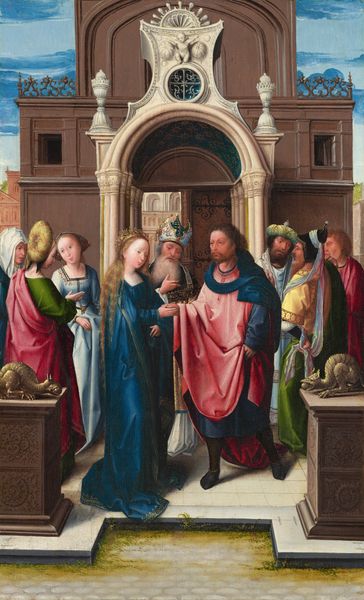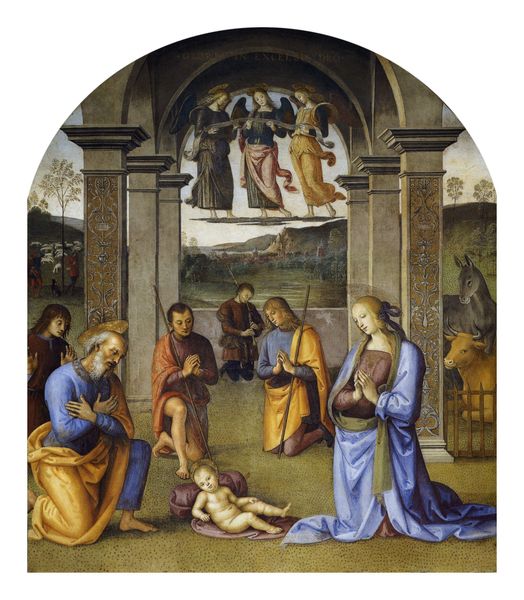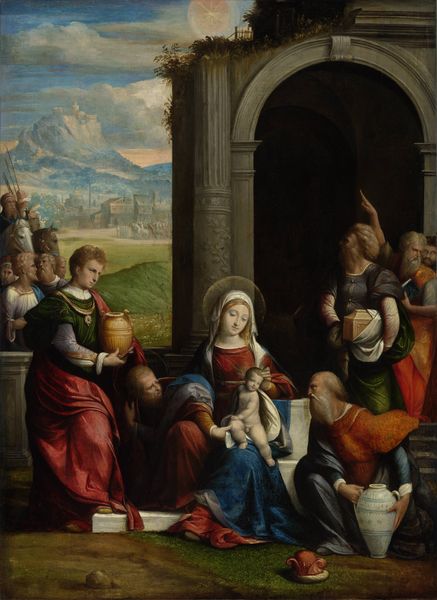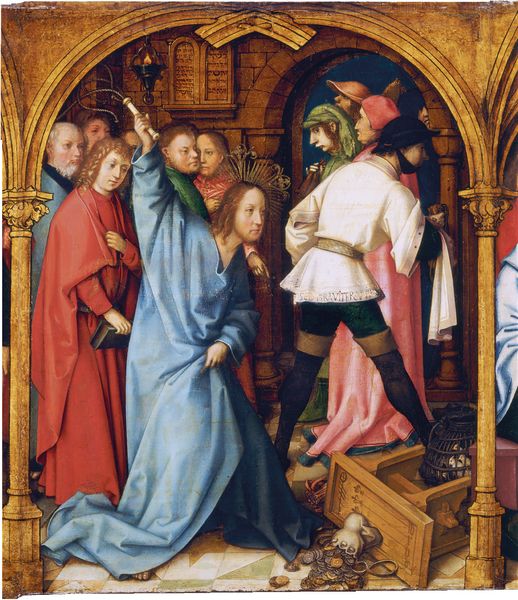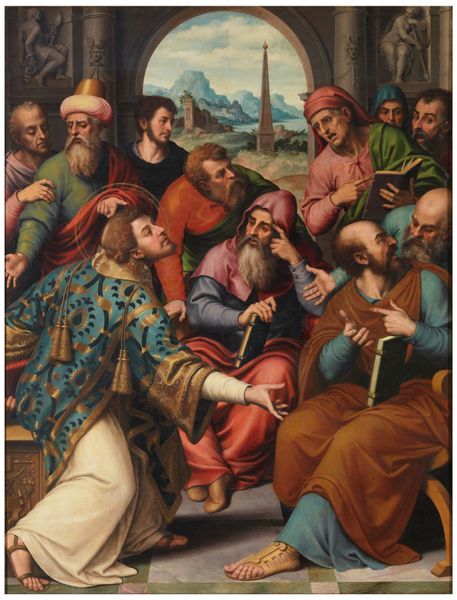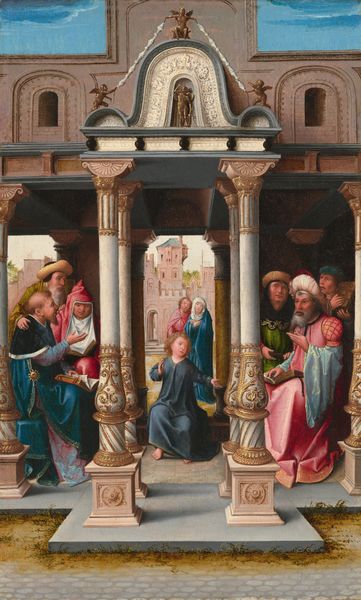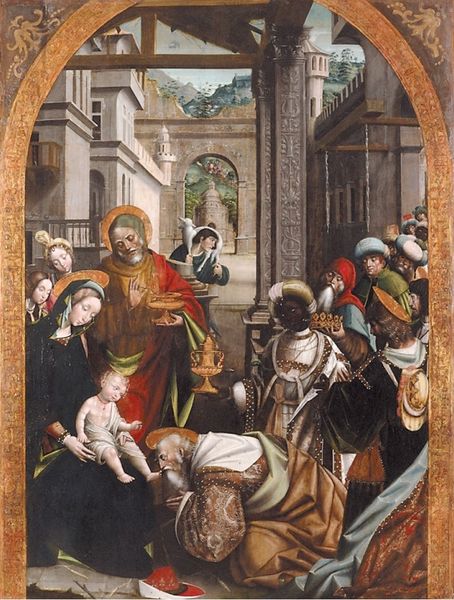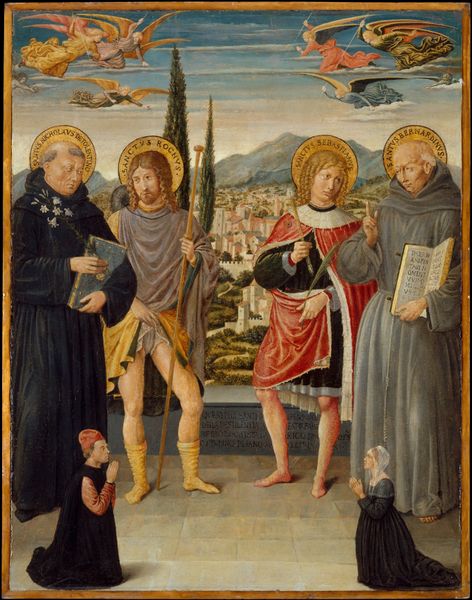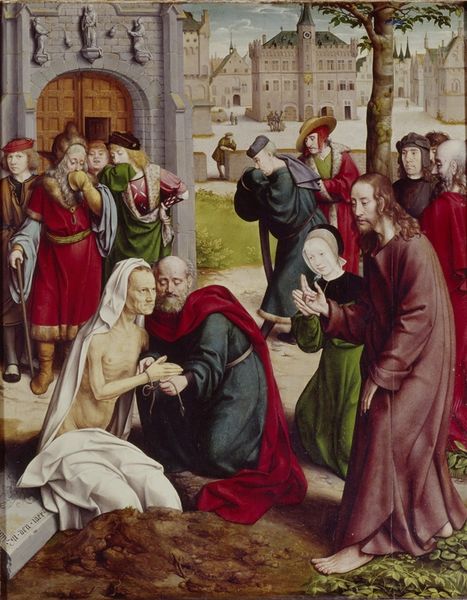
panel, painting, oil-paint
#
portrait
#
panel
#
painting
#
oil-paint
#
sculpture
#
figuration
#
oil painting
#
history-painting
#
northern-renaissance
#
portrait art
Copyright: Public domain
Editor: Here we have Jan Joest's "Crowning with Thorns," an oil painting on a panel from the Northern Renaissance. It’s...well, it’s pretty brutal. There's a lot of cruelty on display. What do you see in this piece? Curator: Brutal is a good word for it. The almost grotesque depiction of Christ's tormentors... It’s meant to be disturbing. But notice how the artist focuses on the faces—the cruelty, the apathy. Even the elaborate architecture in the background feels indifferent. This piece, for me, it is about the spectacle of suffering, maybe the artist tried to reflect on that from his personal viewpoint... what is suffering? Who causes that and why? What do you think about that? Editor: That's interesting. I hadn't considered the architecture as another participant. To me, Christ seems so isolated. Did artists frequently depict religious subjects this way? Curator: Oh, absolutely! Remember, art of this period, particularly in the Northern Renaissance, was deeply rooted in religious storytelling and often conveyed strong moral messages. The isolation of Christ underscores his sacrifice and perhaps even a critique of those in power at the time. Art was so good for that in those ages! To express openly something that others could not even think. And religion gave ground for some works to survive for so long, as an accepted element from culture. Editor: So, the suffering isn't just visual; it's conceptual, designed to provoke thought and, maybe, even repentance? I'll definitely see this work in a new light from now on. Curator: Indeed, this is an interesting case study to examine the roots of feelings like suffering.
Comments
No comments
Be the first to comment and join the conversation on the ultimate creative platform.
